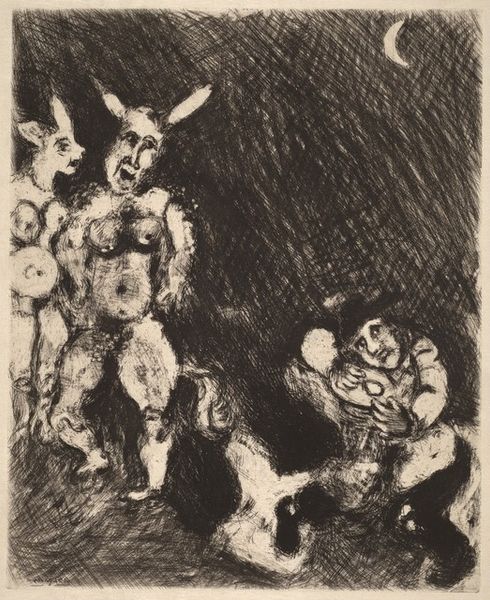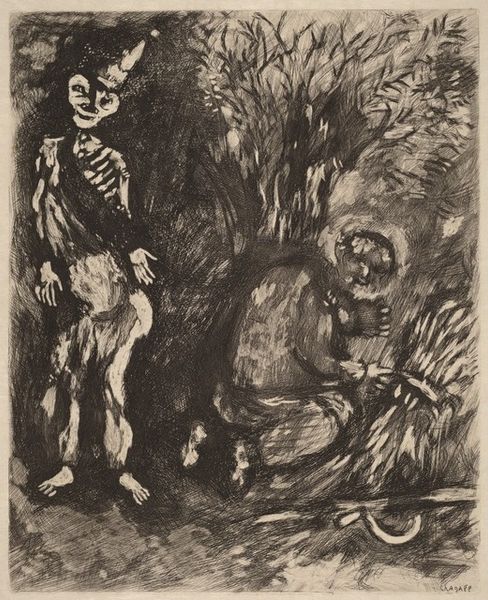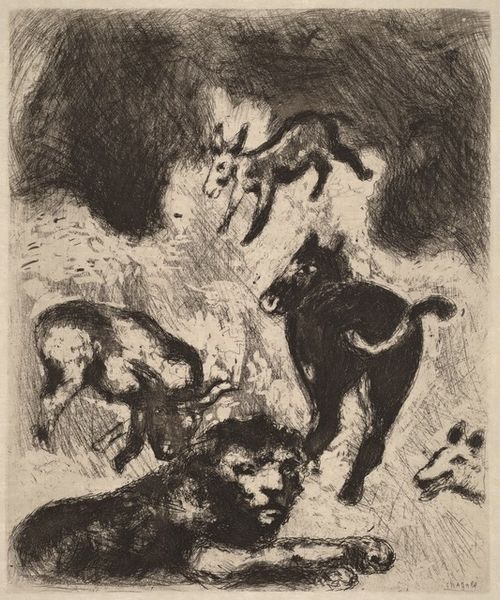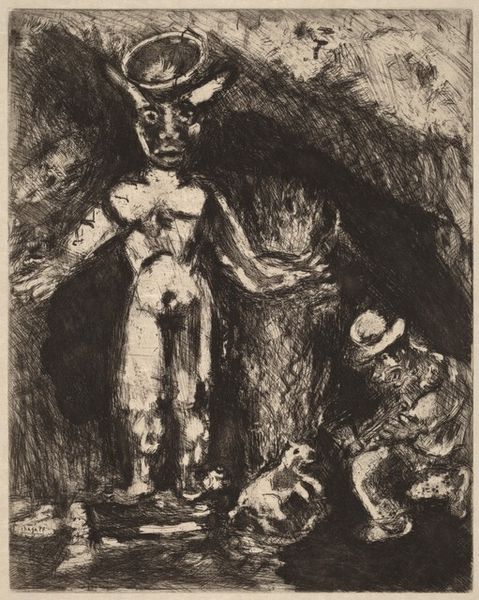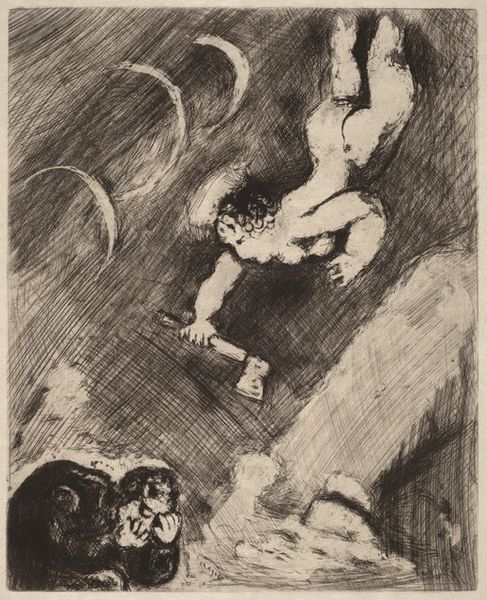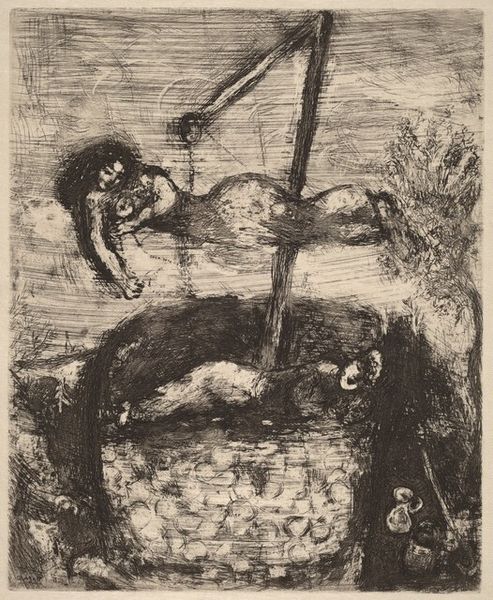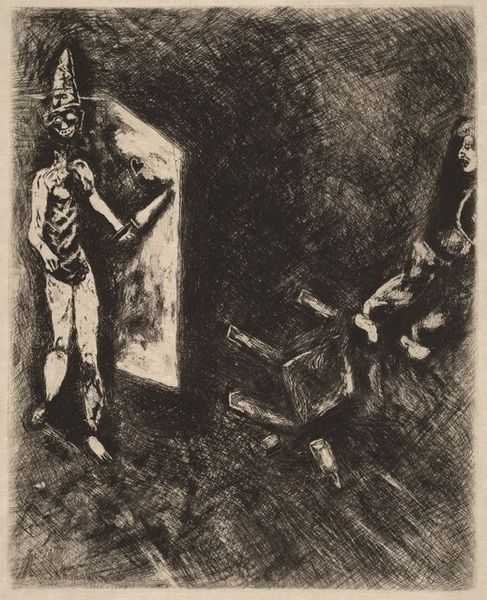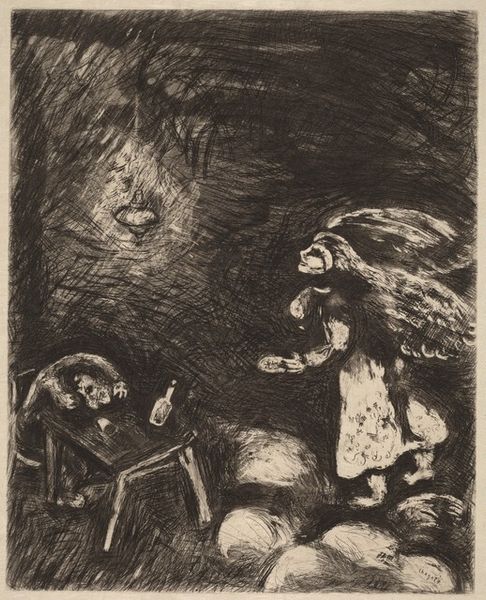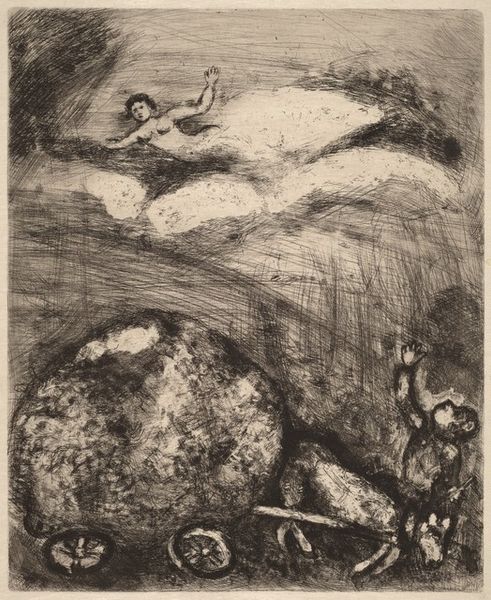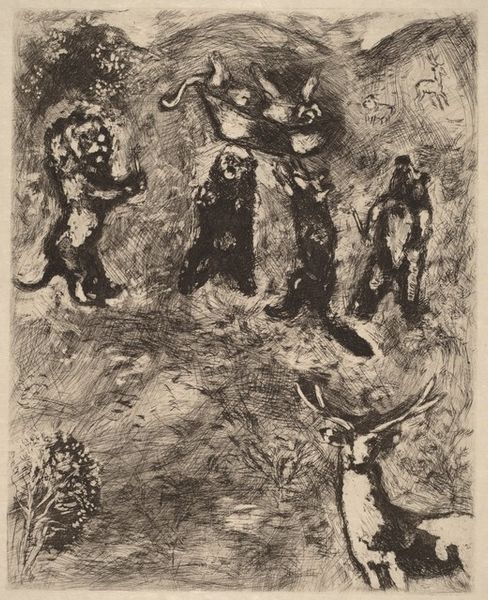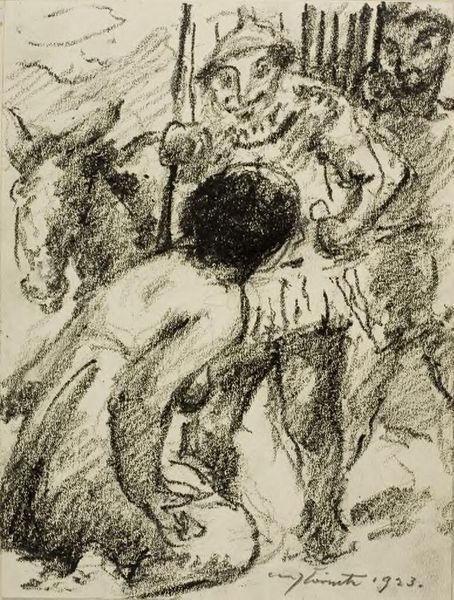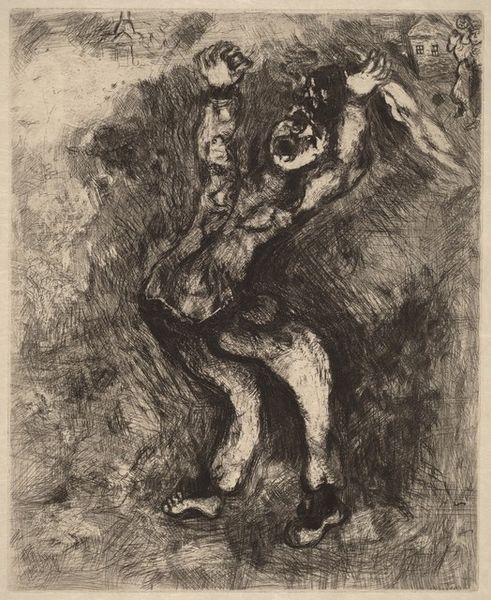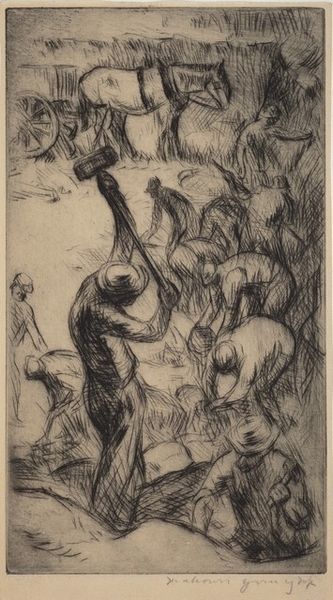
drawing, print, etching
#
drawing
# print
#
etching
#
charcoal drawing
#
figuration
#
pencil drawing
#
surrealism
Copyright: National Gallery of Art: CC0 1.0
Curator: This is Marc Chagall's "The Child and the Schoolmaster," a 1927 etching and print, brimming with surreal intensity. Editor: My first impression? It's all frantic energy. Look at those scratches and scribbles. The figures seem almost untethered, like dreams struggling to stay afloat. Curator: Yes, Chagall masterfully used the etching needle to evoke a dreamlike, anxious atmosphere. It feels like a fleeting memory. Look at the schoolmaster—rigid, almost authoritarian in his stance. But beside him, this child flailing in a thicket, grasping desperately at a fragile branch... Editor: And all created by scratching away at a copper plate. What kind of acid bath was needed to produce that level of chaotic detail? Was he after some sort of tonal effect using different gauges of needles? Curator: You are spot on; acid played a critical role to modulate light. Now consider, what is Chagall expressing about formal education here? Editor: Given that his works frequently refer to his background, his formative childhood experiences as a Hasidic Jew, the symbolism to me could be obvious and autobiographical, portraying a tension between traditional authority and raw youthful vitality. Curator: Precisely. It captures the tension between tradition and individual experience—something that surely was playing out across post-WWI Europe. But he leaves it unresolved; are we meant to champion the child, to scorn the master, or simply to witness this curious relationship? Editor: Well, even in 1930, access to printing materials was not so accessible, certainly not on the scale of canvas, paints, or even easels and studios. The selection of a metal print could show how keen Chagall was to create images affordable to regular families. Was there even a thriving middle-class market that sustained artists like Chagall at the time? Curator: A thought-provoking angle! You're encouraging us to consider who this work was made for. Chagall's art, especially his prints, ensured his visions were within reach of a wider audience, creating the possibility for greater social commentary. Editor: Thinking about how it's etched rather than drawn frees it, somehow. I mean it doesn't look academic, formal in that sense. I guess that is the point. Curator: I find myself haunted by the contrast of forms within—how this work resonates within, almost an outcry to life that is difficult to voice out loud. Editor: Yes. It has this unnerving beauty. It makes you question authority even today.
Comments
No comments
Be the first to comment and join the conversation on the ultimate creative platform.
